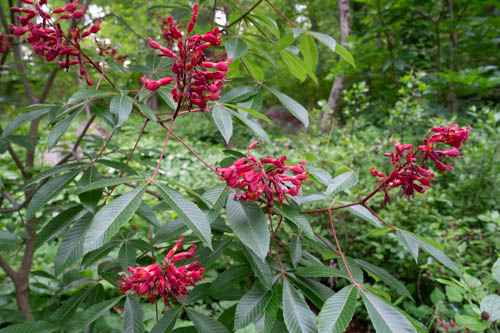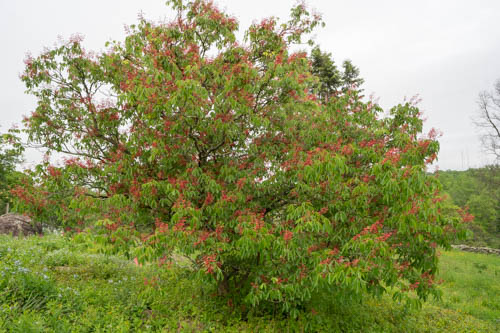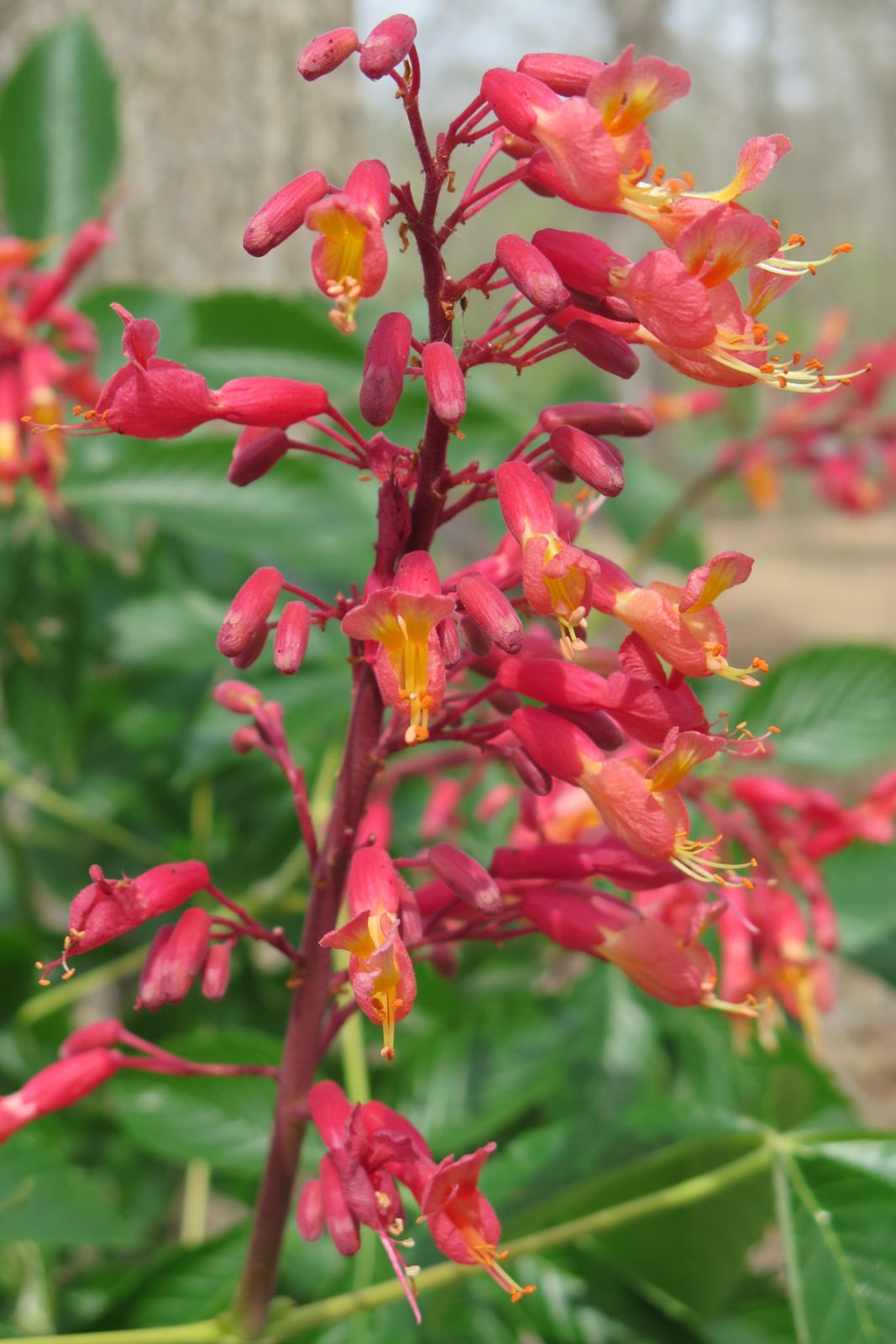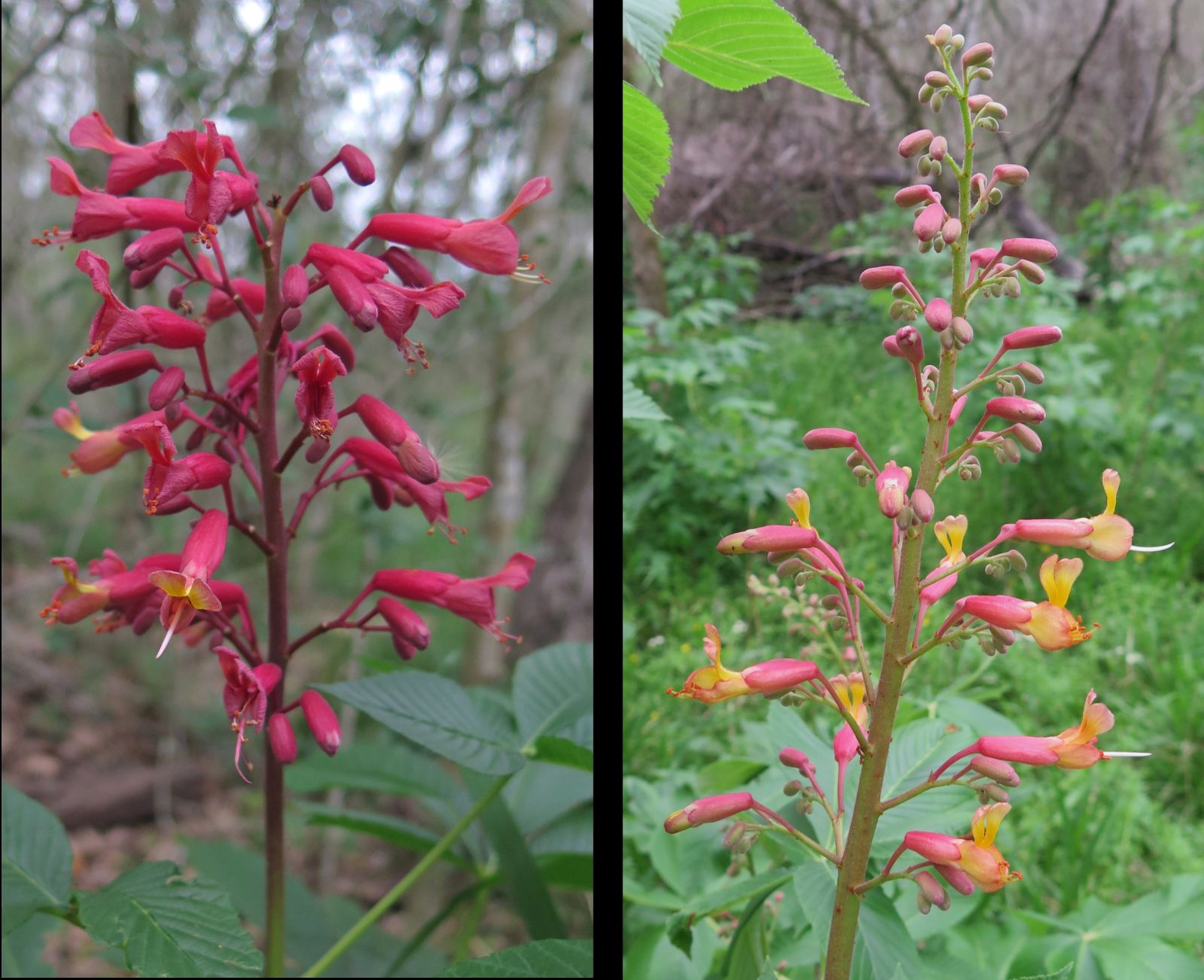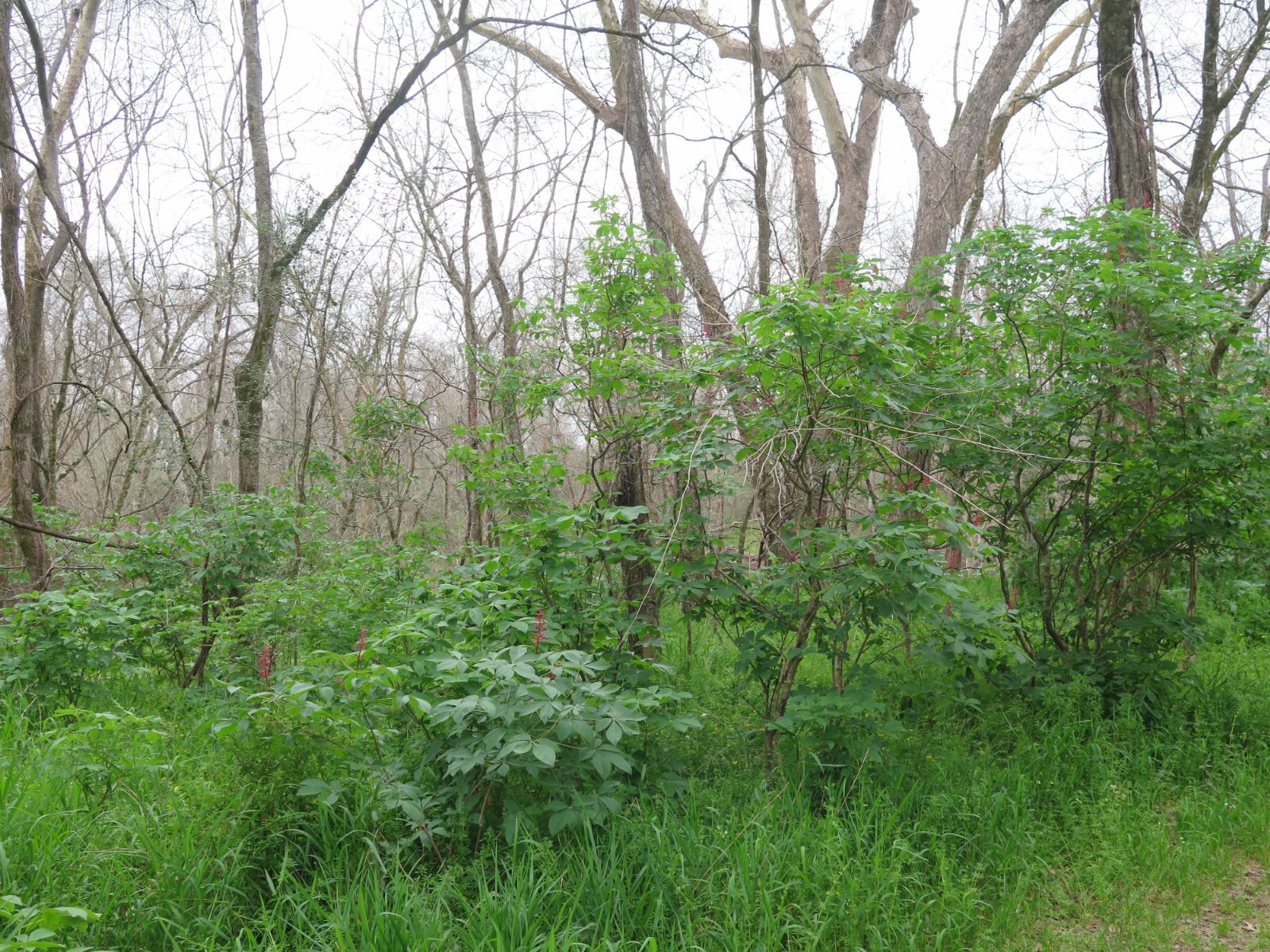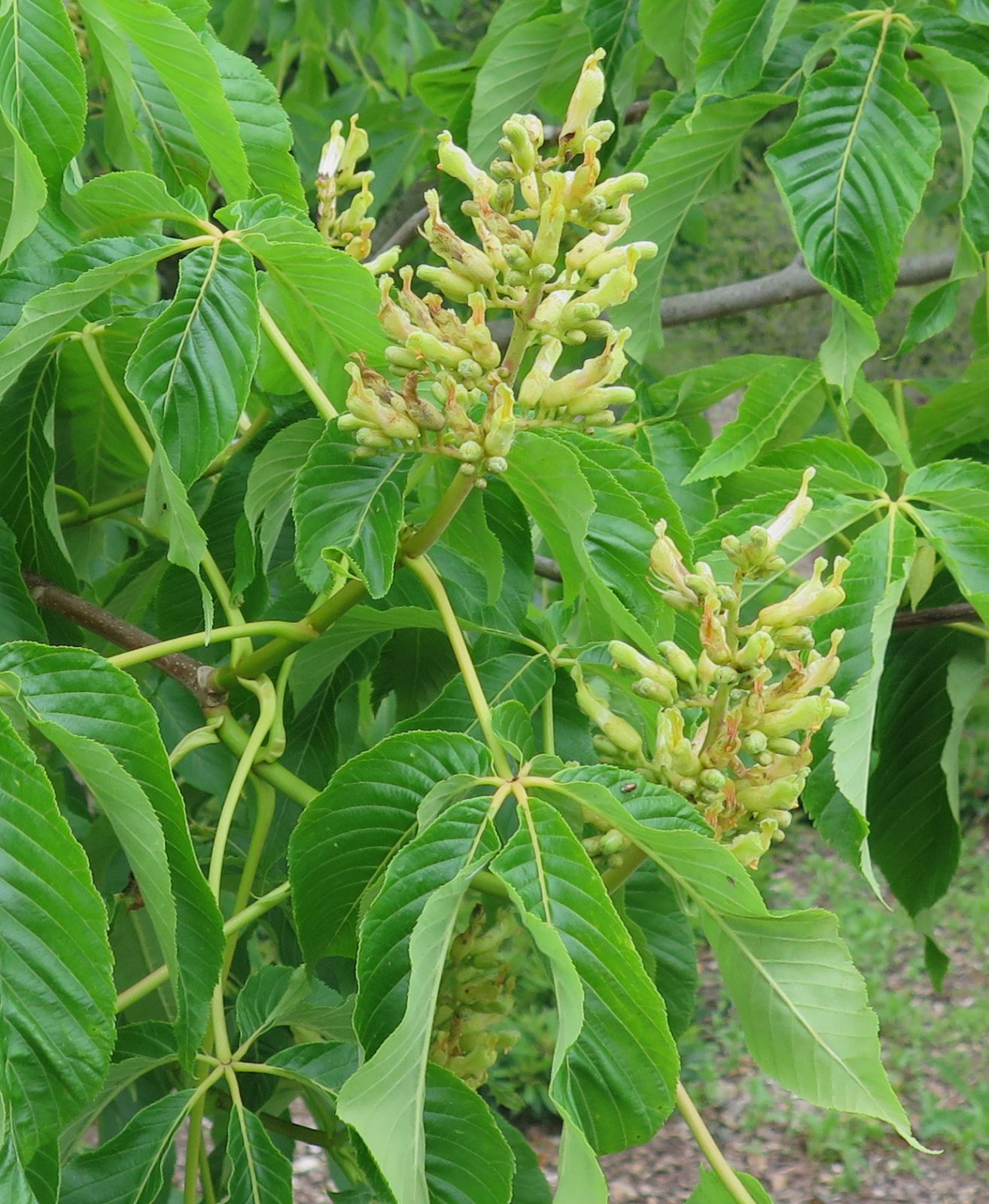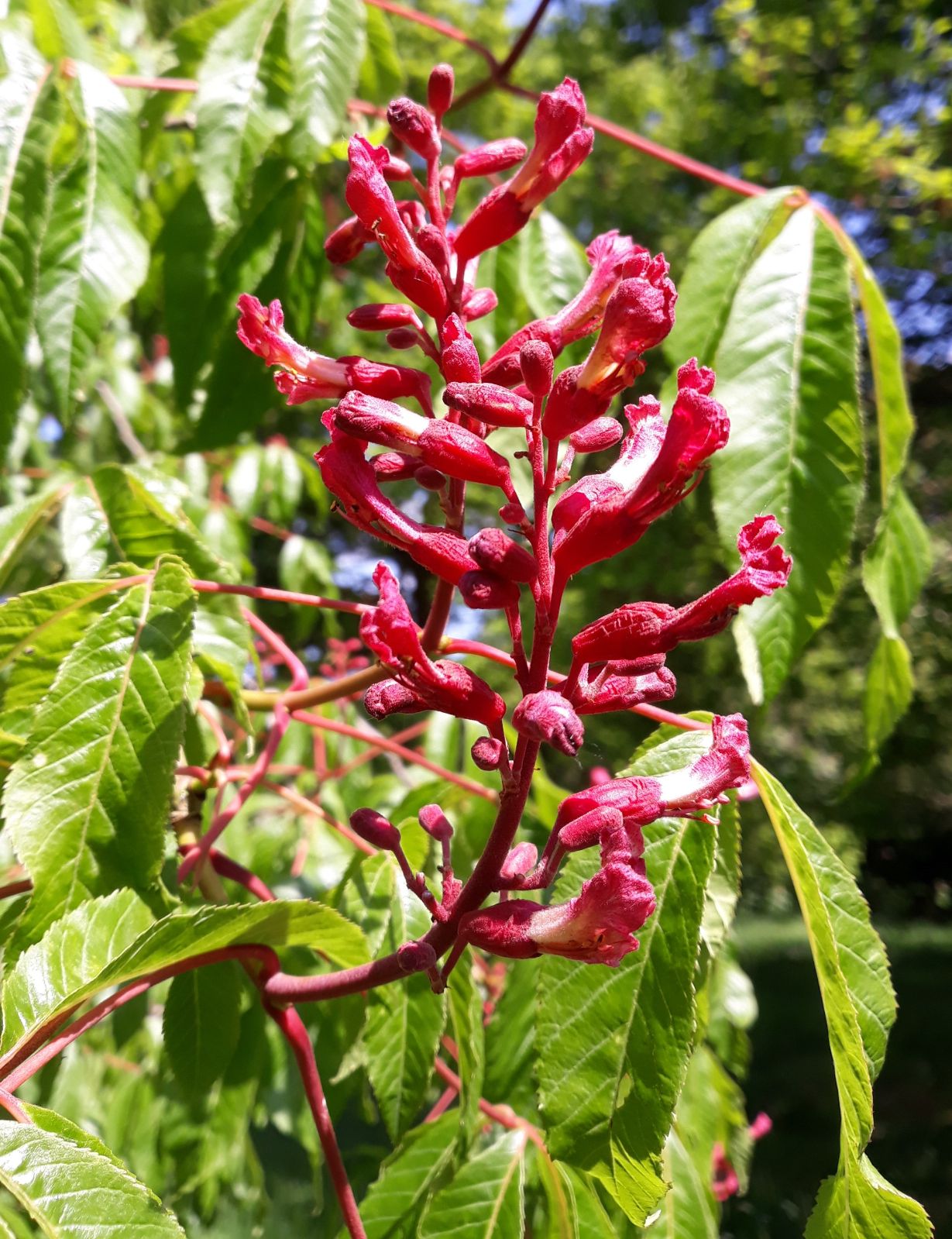Aesculus pavia
Credits
Article from Bean's Trees and Shrubs Hardy in the British Isles
Recommended citation
'Aesculus pavia' from the website Trees and Shrubs Online (treesandshrubsonline.
Genus
Common Names
- Red Buckeye
Infraspecifics
Other taxa in genus
- Aesculus × bushii
- Aesculus californica
- Aesculus × carnea
- Aesculus chinensis
- Aesculus + dallimorei
- Aesculus flava
- Aesculus glabra
- Aesculus glabrescens
- Aesculus glaucescens
- Aesculus hippocastanum
- Aesculus indica
- Aesculus × marylandica
- Aesculus × mutabilis
- Aesculus × neglecta
- Aesculus octandra
- Aesculus parviflora
- Aesculus splendens
- Aesculus sylvatica
- Aesculus turbinata
A shrub 8 to 12 ft or more high, with smooth branches and non-resinous buds. Leaves composed of five leaflets, which are 2 to 5 in. long, lanceolate, obovate or narrowly oblong, slightly downy beneath, especially in the vein-axils; irregularly, sharply, often doubly toothed. Flowers in panicles 3 to 6 in. long; each flower 11⁄2 in. long, with the four petals glandular at the margins, which scarcely expand at all; stamens about the length of the petals. Fruit smooth. Blossoms in early June.
Native of the southern United States; introduced, according to Aiton, in 1711. It is one of the rarest of the genus in gardens. The plants once met with under the name were usually forms of A. × hybrida, and even these are rarely seen today. It was usually grafted as a standard on some other species, when it formed a round-headed small tree, with its lower branches pendulous. But the plants at present cultivated at Kew do not show this character. The flowers of the red buckeye are richly coloured, but owing to the petals keeping closed, do not make so fine a display as they otherwise would.
From the Supplement (Vol. V)
This species is figured in Bot. Mag., n.s., t.857. The plant at Kew from which the material was taken came from the Arnold Arboretum as A. splendens, now included in A. pavia.
A. discolor, mentioned under A. pavia as a close ally, is included in it by Hardin. The combined species ranges as far west as Texas, where the flowers are usually yellow. (More typically the flowers in A. pavia are bicoloured red and yellow at first, becoming wholly red as they age, or are red from the start.)
A. pavia is the type-species of the section Pavia, which is characterised by the long-clawed petals and the usually coloured calyx. The other species in this section are A. flava (octandra), A. glabra (including A. arguta as a variety), and A. sylvatica (A. neglecta auct., not Lindl.). The species in this section produce fertile hybrids where they meet in the wild, through which there is a ‘leakage’ (introgression) of genes from one parent to the other, and some of the variation within the species concerned is due to this factor.
A discolor Pursh
This species is closely related to A. pavia but differs in the white down covering the leaf beneath. However, it is possible that the two species pass imperceptibly one into the other. The var. mollis (Raf.) Sarg. (A. austrina Small) is more representative of the species than is typical A. discolor, which has red and yellow flowers and is rare; in var. mollis, which is commoner in the wild, they are red.'Atrosanguinea'
Flowers darker red than in the type. –


